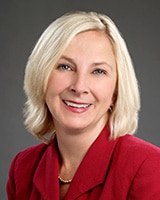[Podcast] Engaging a Healthcare Audience with Video Streaming

Carol Norris-Smith, VP of Marketing & Public Affairs for Penn Medicine Princeton Health
Penn Medicine Princeton Health considers community wellness an important part of its mission. And one of the most successful ways it has engaged with its audience is streaming video. In fact, over the past two years, after a shift in their video strategy, the health system has seen a 37% increase in video views.
Healthcare Success CEO Stewart Gandolf sat down with Carol Norris-Smith, VP of Marketing & Public Affairs for Penn Medicine Princeton Health, in an interview following her HCIC (Health Care Internet Conference) presentation, “Engaging Audiences Through Video.”
Check out the podcast interview below or keep reading for our insights!
The role of video at Penn Medicine Princeton Health
Video is just one of the ways Penn Medicine Princeton Health is able to engage with the community. However, with over 2,000 programs a year, including live programs, screenings, lectures, and seminars, video is a standout. Over the past 7 years, its 109 videos have received over 44,000 views.
Videos are hosted on both their USTREAM channel and on YouTube. Content varies from educational content to patient success stories to employee profiles. And while their content has always received views over the past several years, a major shift allowed for a jump in interest and viewership.
Shifting their video streaming strategy
Originally, Penn Medicine Princeton Health relied on live streaming to engage its audience. They’d set up a camera in an office with a professional backdrop and good lighting and have an expert speak on a particular topic.
However, says Norris-Smith, they encountered a couple of obstacles.
- Viewers tend to watch video during the day. However, experts with office hours and other responsibilities had little time or availability to livestream during the day time.
- Some experts became too nervous during livestreaming, and this was apparent in their videos.
To solve this problem, Norris-Smith and her team switched to a pre-recorded video model. And that’s when they saw a 37% jump in video views.
The advantage of this new strategy
Shifting away from live video allowed Penn Medicine Princeton Health to spend more time creating quality content that was reflective of its brand and values.
Doctors and experts are more comfortable during filming. Many are given cue cards or a teleprompter to inspire confidence, and editing can take care of the rest.
Penn Medicine Princeton Health also uses a professional videographer to ensure everything looks and sounds as professional as possible. That combined with editing allows for a polished product that is reflective of the brand, the speaker, and the institution.
What content works best?
So what type of videos earn the most views and shares? Norris-Smith says she was pleasantly surprised by the popularity of mental health and maternity topics.
Behavioral health, mental health, and addiction videos have received some of the highest numbers of views of any other content. One of their most popular was this video on women and drinking.
As well as this video on anxiety in school-aged children:
Timely content has proven to find viewership, such as a suicide prevention video following the death of Robin Williams. And a video in Hindi about diabetes was quite popular with the large Indian population in the Princeton area.
Finally, they’ve found a lot of traction with their human interest, patient success, and Princeton Star videos. The Princeton Star series recognizes employees at all levels of the organization. The series is popular with employees, but Norris-Smith was surprised to see how many people in the community watch them as well, giving them a chance to get to know the staff.
Promoting streaming video content
Norris-Smith attributes a lot of the videos’ recent success to the higher video quality of pre-recorded content. The new video format has allowed for greater flexibility in scheduling. And editing allows for conversational content that’s concise without feeling too formal.
However, video promotion is what draws people in and lets them know it is live to stream right away or at their convenience. Penn Medicine Princeton Health promotes its video content in several ways:
- Eblasts to their email list of 81,000 subscribers
- A consumer magazine with a distribution of 87,000 people with video events promoted in its health calendar
- An online calendar
- Some radio commercials in the past
- Social media posts and advertising
Social media, says Norris-Smith, has been highly effective. The health system already has nearly 35,000 followers. When a video is set to premiere, its promoted both organically and through boosted posts
So can an emphasis on professional video content work for you?
Not every organization requires a professional videographer or lighting and sound equipment to produce quality videos. Norris-Smith closed out this interview with a piece of advice for anyone considering incorporating more video into their community engagement strategy:
“Just try it. You’ll learn stuff and refine it according to your own institution...but it’s definitely worth it.”








